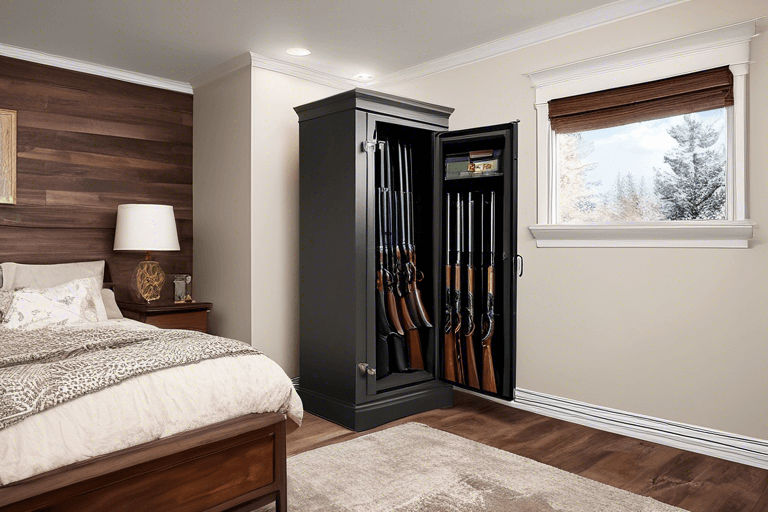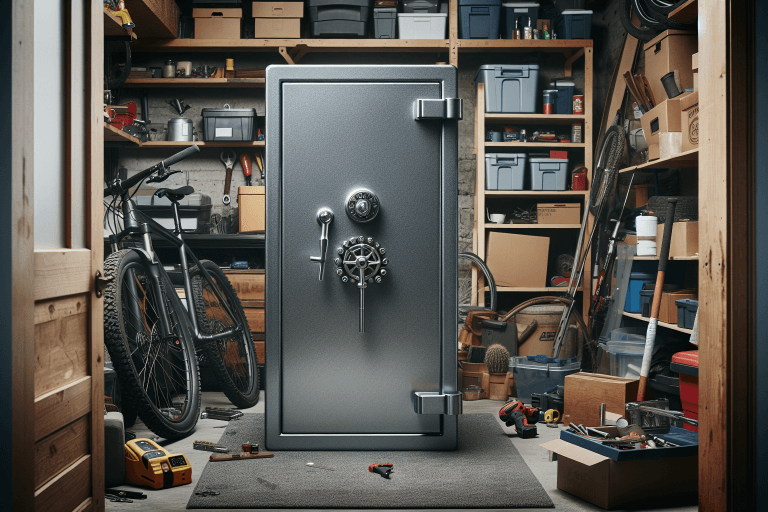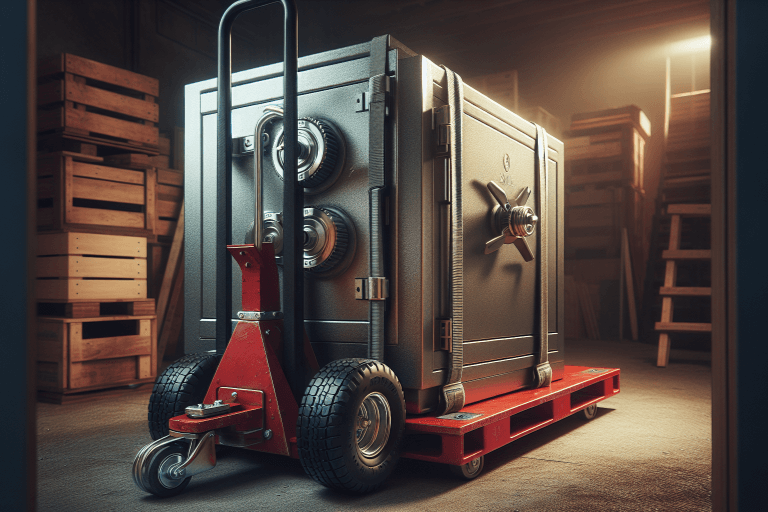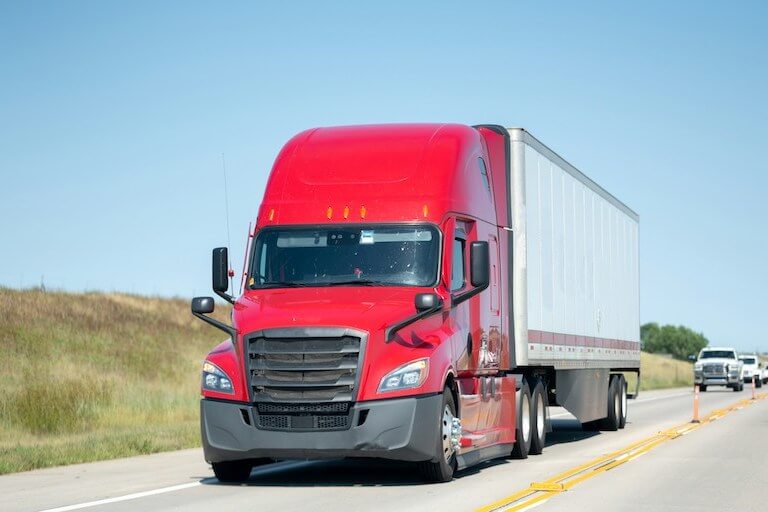
Can You Put a Gun Safe Upstairs? Consider This First
Gun safes are essential for responsible gun owners who prioritize the safety and security of their firearms. But what if you live in a multi-story home or apartment? Can you put a gun safe upstairs?
In this guide, we will explore the considerations and challenges of installing a gun safe on the second floor or higher.
We will also provide expert tips and insights to help you make an informed decision.
Understanding Safe Weight and Size
Before delving into the logistics of moving a gun safe upstairs, it's crucial to understand the weight and size of the safe itself.
Gun safes can vary significantly in weight, ranging from a few hundred pounds to over a thousand pounds for larger models.
The dimensions of the safe, including height, width, and depth, also play a significant role in the installation process.
When considering putting a gun safe upstairs, it's important to assess the structural integrity of your home or apartment.
Most second-story floors in solid structures can handle a significant amount of weight, similar to that of a bathtub filled with water. However, it's essential to ensure that your floor can support the weight of the safe, you, and any additional items stored inside.
Professional Safe Movers: The Smart Choice
Moving a gun safe, especially up a flight of stairs, can be challenging, risky, and potentially damaging to both your property and the safe itself.
While it may be tempting to undertake the task yourself, hiring professional safe movers is the smartest choice. These experts have the experience, equipment, and techniques necessary to ensure a safe and successful installation.
Professional safe movers employ specialized dollies, straps, and protective coverings to transport and position the safe without causing damage to your home or the safe's integrity.
They also have the expertise to navigate narrow staircases, tight corners, and other obstacles that may arise during the moving process.
By hiring professionals, you can avoid the risk of injury, property damage, and costly repairs.
Assessing Staircase Design and Condition
When considering moving a gun safe upstairs, it's critical to assess the design and condition of your staircase. Some staircases may not be suitable for safely moving heavy objects, such as gun safes.
Narrow steps, steep angles, and limited space can pose significant challenges during the installation process.
If you're planning to move a gun safe to a second or third-story apartment, it's essential to ensure that the staircase can handle the weight and dimensions of the safe.
Sturdy construction and proper maintenance are key factors in determining whether the staircase can support the weight of the safe and the individuals involved in the move.
The Importance of Proper Equipment
Moving a gun safe requires the use of specialized equipment to ensure a safe and efficient process.
Professional safe movers typically utilize heavy-duty dollies designed to support the weight of the safe and provide stability during transport. These dollies often feature stair-climbing capabilities, making it easier to navigate steps and stairs.
In addition to dollies, safe movers may utilize various tools and accessories to protect both the safe and your home during the move.
Protective coverings can prevent scratches and dings on walls, doorways, and staircases, ensuring a damage-free installation. Straps and restraints are also essential for securing the safe to the dolly and preventing it from shifting during transport.
Ensuring Proper Installation and Anchoring
Once the gun safe is safely transported to its designated location upstairs, it's just as important to ensure proper installation and anchoring.
Bolting the safe to the floor or wall adds an extra layer of security, preventing unauthorized individuals from easily moving or removing the safe.
However, before attempting to anchor the safe, it's essential to consider the type of flooring and consult with professionals if necessary.
Concrete floors provide the most secure anchoring surface for gun safes. The drilling and bolting process should be relatively straightforward, ensuring a stable and immovable installation.
However, when dealing with wooden floors, caution is necessary. Drilling through wooden floors can pose structural risks, and it's important to consult with professionals to determine the best anchoring method or alternative solutions.
The Dangers of DIY Safe Moving
While it may be tempting to save money by attempting to move a gun safe upstairs yourself, the risks and potential consequences outweigh the potential cost savings.
DIY safe moving can result in personal injury, property damage, and compromised security. Without proper equipment, training, and expertise, the chances of accidents and mistakes increase significantly.
Moreover, moving a gun safe upstairs involves not only physical strength but also knowledge of safety protocols and techniques. Professional safe movers have undergone extensive training to ensure the safe and secure transport of heavy objects.
By entrusting the task to experts, you can rest assured that the installation process will be handled with the utmost care and professionalism.
Considering Alternatives: Ground-Floor Placement
If moving a gun safe upstairs proves to be impractical or poses too many challenges, considering alternative placement options may be necessary.
Ground-floor placement, either inside the home or garage, is often the most straightforward and convenient choice, especially for larger and heavier safes. It eliminates the need for navigating stairs and reduces the risk of damage to your property and the safe.
However, ground-floor placement doesn't necessarily mean compromising security.
Properly securing the safe to the floor, utilizing high-quality locking mechanisms, and concealing the safe in some way can provide a high level of protection for your firearms and valuables.
Additional factor need be considered if installing the gun safe in your garage, such as controlling humidity and moisture, as well as ensuring the security of the garage itself.
Making the Right Choice for Your Gun Safe
Ultimately, the decision to put a gun safe upstairs depends on various factors, including the weight and size of the safe, the structural integrity of your home or apartment, the staircase design and condition, and your personal preferences.
If moving a gun safe upstairs proves to be impractical or challenging, ground-floor placement can still provide adequate security and convenience.
By consulting with professionals, assessing your options, and prioritizing safety, you can ensure the proper installation and protection of your firearms and valuables.




